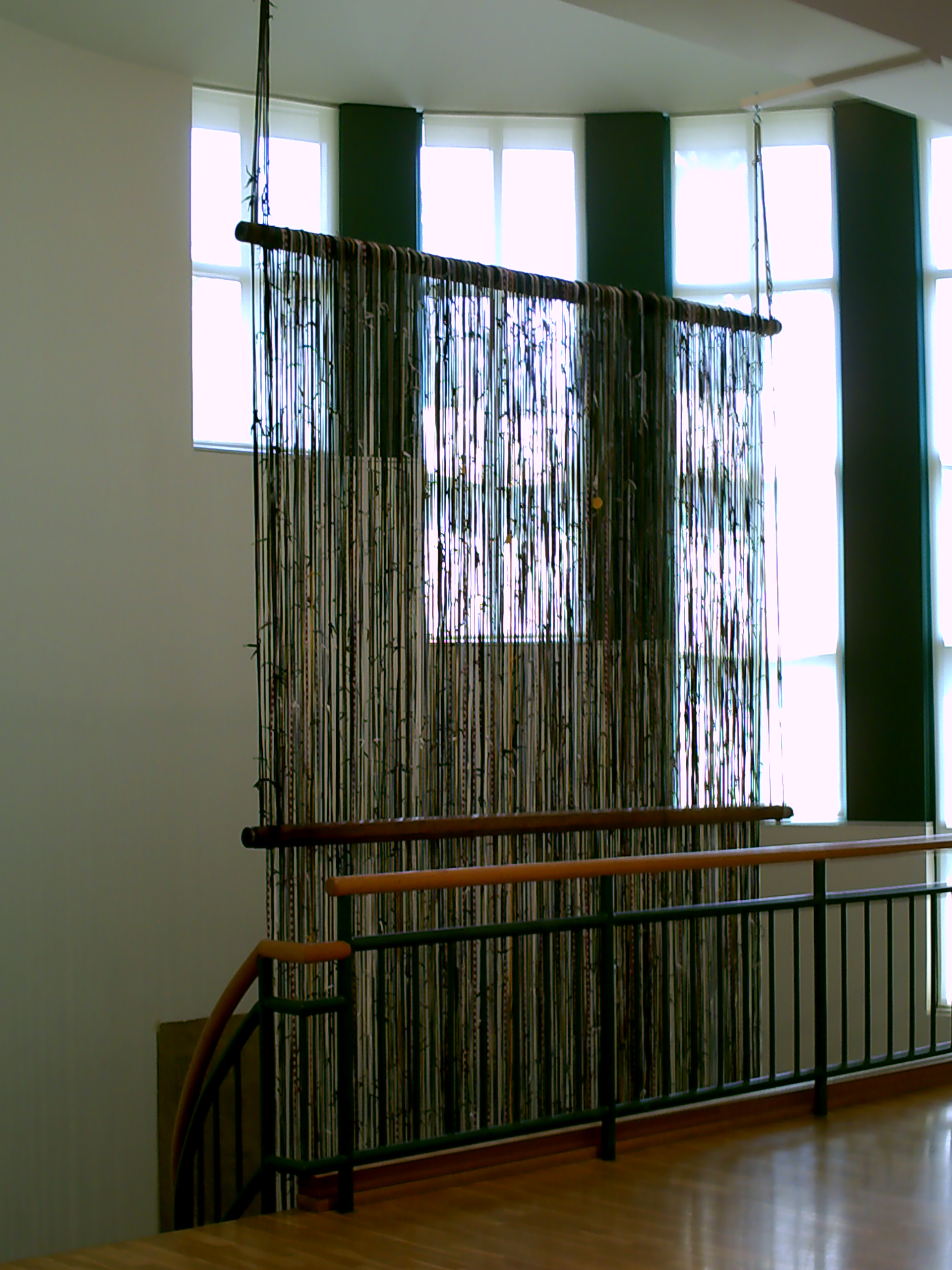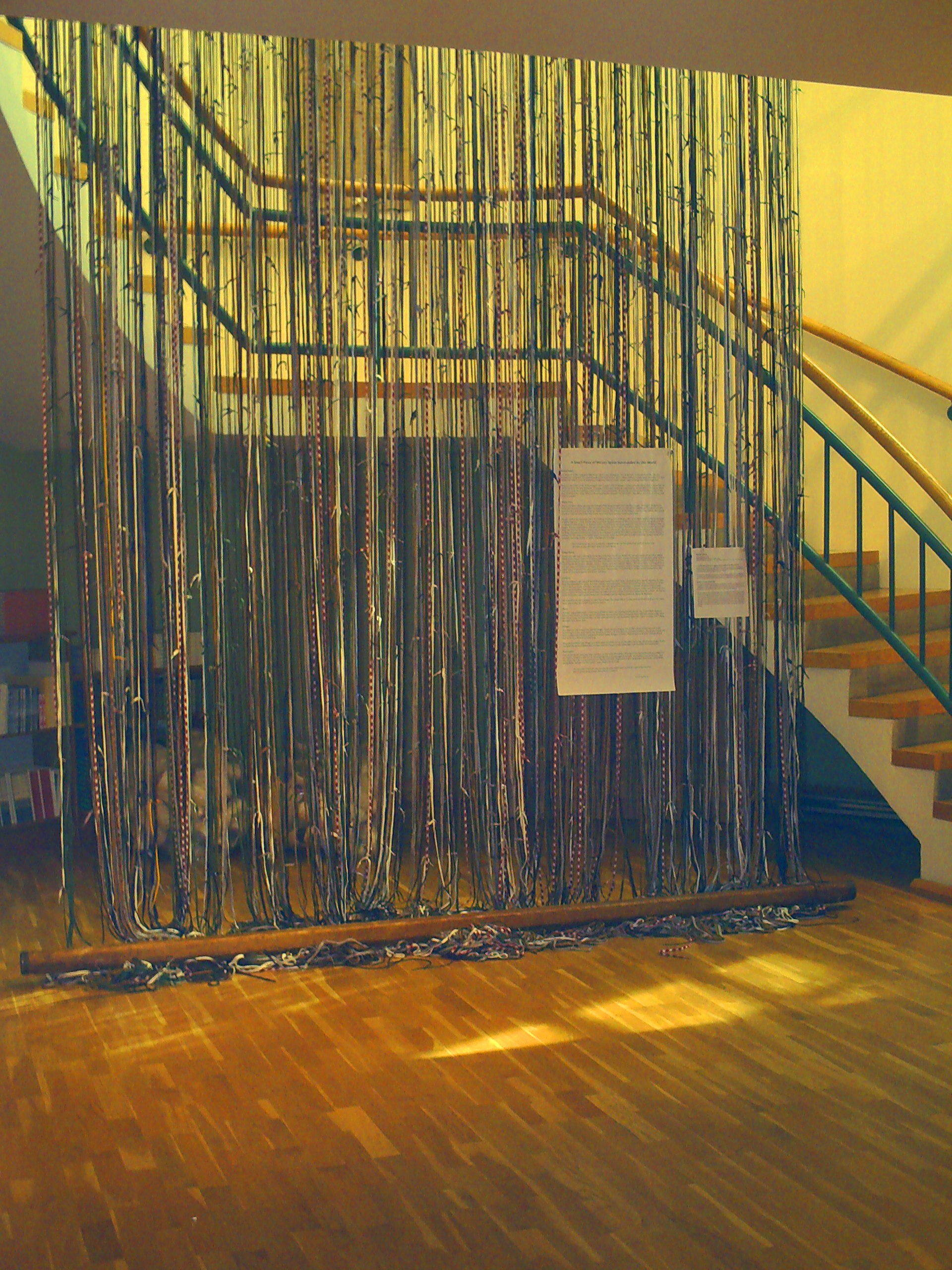"SOCIAL FABRIC"
ART INSTALLATION, BATES COLLEGE MUSEUM OF ART (2006-07)
Partners: Christina Bechstein, Bates College Museum of Art, Museum L-A, Empower Lewiston
"Social Fabric" was a collaboration with Maine-based Christina Bechstein, whose work melds public, environmental, and site-specific elements, often repurposing organic and found materials that reflect the social and natural setting of the work. Her creative practice is collaborative and iterative. As a teacher--she was a faculty member at Maine College of Art at the time of this project--she is gifted at combining studio pedagogy, service-learning, and community participation. When the Bates College Museum of Art issued a call for "Green Horizons," an exhibition of works on the theme of sustainability, to be co-created by artists and scholars, Christina seemed the perfect partner.
We shared an interest in place-making and the role of tradition and story in place-making. Christina was eager to draw on the historical work I had done with Museum L-A (described here and here). As a weaver herself, she was especially fascinated by Lewiston's history as a center of textile weaving. So we focused our project on "the woven textile as a metaphor for the city of Lewiston" and on the relationship of the social fabric to landscape and place-making. The city was emerging from a period of industrial decline, and its social fabric was changing in the face of renewed economic activity and the arrival of Somalis and other newcomers. Our hope was to reflect and advance this reweaving of community and place.
We began by engaged a wide range of Lewistonians in conversation. How did they define the city's fabric? What held it together or threatened to pull it apart? What did they hope the future would bring? The local advocacy group Empower Lewiston helped to enlist community organizations--senior centers, youth groups, community gardens--with whom Christina held workshops on these themes. I led an independent study on The Making and Meaning of Place, for which students interviewed residents and civic leaders. We visited Maine Heritage Weavers, a shop that produces traditional Bates bedspreads using Jacquard looms.
What sort of final product would these investigations lead to? We considered many ideas: maps, a display of stories, public textile art. In the end, Christina fashioned an installation from materials she found in the storage rooms of Museum L-A: three long loom beams (around which the finished textiles would have been wrapped) and thousands shoelaces (which would have been used to tie up yarn bundles). "Social Fabric" hung through two floors of the "Green Horizons" exhibition, its form suggesting both a huge warp-weighted loom (the earliest weaving technology) and the Great Falls of the Androscoggin River, which powered Lewiston's growth as a milltown. Its scrim of shoelaces, suspended in front of the Museum windows, conveyed both gravity and lightness. For me at least, the work evoked powerfully the ways in which the social fabric mediates past and present, inside and outside, openness and closure, in the ongoing work of community-building.
Christina invited me to contribute a text to serve as a companion to the installation and a commentary on it. "A Small Piece of Woven Space Surrounded by the World" reflects on Lewiston's social and urban fabric, on the ways in which textiles--like communities--are made stronger by differences and cross-purposes, on the tension between warp and weft, fabric and fringe, microcosm and macrocosm, that the woven thing always embodies. This piece remains one of the writings of which I am most proud. And weaving remains for me the most powerful metaphor of my educational and civic work.
For a close-up and the text of "A Small Piece of Woven Space Surrounded By the World," click here.
Return to Past Projects.



